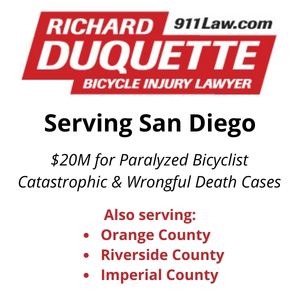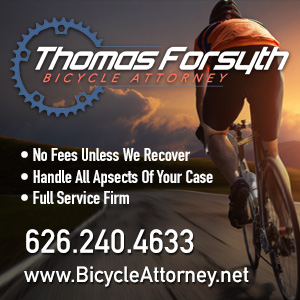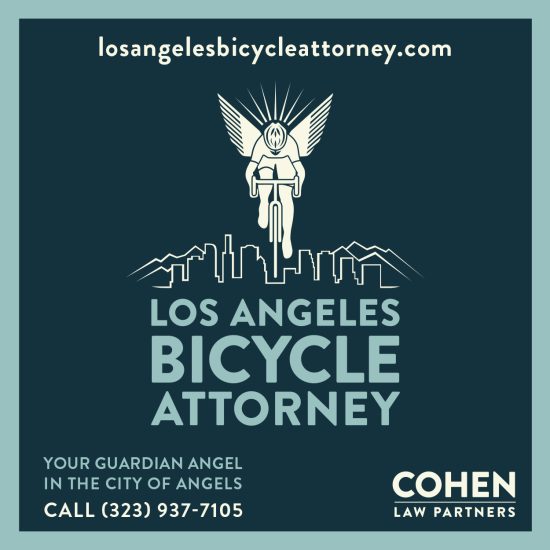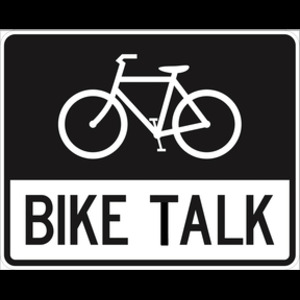
Just one day after Frederick Frazier was killed in a brutal hit-and-run in South LA, another rider was struck in the same intersection.
During a protest over Frazier’s death.
And yes, that driver fled the scene, too.
A group of Frazier’s friends gathered to block the intersection at Manchester and Normandie with their bicycles to call attention to the death and demand justice for their fallen friend.
The protest got out of hand after several people attacked an LAPD SUV when police arrived to break it up, smashing its windows with their bikes.
According to Streetsblog’s Sahra Sulaiman, the young men were angered after graphic photos of the man they knew as Woon were posted online overnight, showing their friend splayed out on the street as another rider attempted to comfort him in his final moments.
A woman in a tan car, who had previously gotten out to argue with one of the protesters, forced her way through the intersection, running a red light in the process, and deliberately slammed into a rider identified as Quatrell Stallings, throwing him into the air.
She then gunned her engine and fled the scene as Stallings stumbled to the curbed.
He was taken to a local hospital; reports are he was not seriously injured.
Now police are looking for two hit-and-run drivers.
One with a $50,000 bounty on his or her head for leaving Frazier to die in the street; another who could — and should — be facing a charge of assault with a deadly weapon.
A memorial ride will be held for Frazier this Friday.
Thanks to Evan Burbridge for the heads-up.
………
A Desert Hot Springs man has received a well-deserved murder charge in the death of Washington man participating in this year’s Tour de Palm Springs.
Twenty-one-year old Ronnie Ramon Huerta Jr. is accused of driving up to 100 mph while stoned before slamming into 49-year old Mark Kristofferson, killing him almost instantly. He was taken into custody after the arraignment hearing, and held on a $1 million bond.
He’s also charged with driving on a suspended license and driving under the influence of drugs.
Thanks to Victor Bale for the link.
………
The LAPD’s Van Nuys Division misses the mark with a bike safety awareness flier.

The piece tells bicyclists to “Always ride in single file,” even though there’s nothing in state law that prohibits riding two or more abreast. And riding abreast is often safer in lanes that are too narrow to share with a motor vehicle by increasing visibility and preventing unsafe passes.
The piece also says riders should walk their bikes across busy intersections, which increases the risk by decreasing mobility and exposing riders to careless and distracted drivers for a longer period of time.
And never mind that a bike helmet may be a good idea, but it’s not required for anyone 18 or older.
But if the point is to increase awareness of bike safety, where is the companion piece telling drivers to always watch for bikes, pass with at least a three foot distance, and open doors with your right hand to prevent dooring?
………
Local
Metro released their draft strategic plan for the next ten years, as they transition from a transit provider to focusing on the entire mobility ecosystem.
CiclaValley explains what it’s like getting cut off in the bike lane by a Metro bus driver in DTLA.
A writer in Azusa encounters a 43-year old gang member at his local bike shop, realizing that bikes bring everyone together.
State
A pair of UC Santa Barbara graduates are nearing the completion of their self-supported bike tour from California to Columbia.
The bizarre anti-bike hysteria continues in San Luis Obispo, where the city council is accused of dirty tricks after re-affirming plans for a bike boulevard. Meanwhile, older SLO residents are up in arms over plans for an e-bikeshare system with a hub on the coast, worrying about whether they’ll be run off the sidewalk.
The San Francisco Chronicle shares the five best bike rides around Santa Cruz.
Testimony in a preliminary hearing fills in some of the blanks in the death of a San Francisco woman run down in Golden Gate Park last year, one of two people killed in the city by hit-and-run drivers just hours apart.
National
Another good piece from Bike Snob’s Eben Weiss, who considers the ethics of breaking traffic laws, noting that obeying the letter of the law isn’t always the safest way to ride.
Wired says Uber’s acquisition of dockless ebike provider Jump means they want to control every way you move, while Bicycling examines dockless bikeshare in the wake of Uber’s entry into the field.
Curbed says cities need to step up to the challenge of controlling streets and sidewalks as bikeshare and shared scooters begin to take over.
Don’t count on glowing infrastructure lighting the streets anytime soon.
A local news site says Honolulu drivers are complaining about the loss of a few hundred parking spaces to make room for bike lanes, somehow blaming that for the traffic congestion in the city.
No bias here. Police in Portland OR ignored a road rage assault on a bike rider that left him with a broken jaw, refusing to even file a report on the case.
A local weekly says Portland’s bike renaissance begins now.
A Lincoln, Nebraska man gets three years behind bars for the drunken hit-and-run that left a city councilmember from a nearby town lying badly injured in the street.
The Catholic bishop of Davenport, Iowa is one of us; he’ll be riding across the state in this year’s RAGBRAI.
Three Illinois priests are riding across their Diocese to promote religious vocations.
Seriously? A road raging North Carolina man gets a gentle caress on the wrist for punching a bicyclist in an attack caught on video, as he’s sentenced to just three days behind bars. That will certainly send a message — one that says go ahead and attack other people on the roads.
International
A British man has been charged in the death of a 91-year old cyclist, who was killed while trying to set a national age record.
A transportation technology project from the University of Melbourne says to improve safety and performance on our streets, we’ll all have to be connected in a single network including cars, buses, pedestrians and bicyclists.
An Aussie ultracyclist set a new record by riding 555 miles in 24 hours.
Competitive Cycling
The head of cycling’s governing body says women cyclists deserve more than they’ve been getting, and he dreams of a Paris-Roubaix Feminine.
An autopsy concludes that Michael Goolaerts suffered a heart attack while riding in Paris-Roubaix last Sunday; there had been speculation that his heart stopped as a result of the fall.
Writing for Cycling Tips, Jonathan Vaughters reminds us that bike racing is a dangerous sport, where tragedy can happen any day.
Finally…
Hit a pothole on your bike, and get a bill for breaking it. Your next wheel could weigh ten pounds and make riding easier.
And no, dockless bikes don’t belong in trees.



















